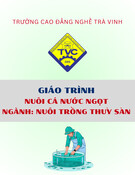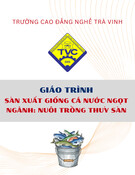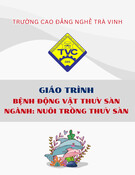
Int.J.Curr.Microbiol.App.Sci (2020) 9(11): 444-453
444
Original Research Article https://doi.org/10.20546/ijcmas.2020.911.055
Fortification of Lassi with Herbal Extracts – Effects on Quality and Total
Phenolic Content
Soma Maji1*, Pinaki R. Ray2 and Pijush K. Ghatak2
1Centurion University of Technology and Management, Odisha, India
2Department of Dairy Chemistry, West Bengal University of Animal and Fishery Sciences,
Mohanpur, Nadia, West Bengal, India
*Corresponding author
A B S T R A C T
Introduction
The health benefits of different types of foods
have been investigated for many years. The
growing concern for health and nutrition
among consumers has increased the market
potential for functional foods throughout the
world. Several studies have shown that
fermented food products do have a positive
effect on health status (Sahlin, 1999). The
market for fermented milk products is
growing at a faster rate throughout the world.
In India, around 9 % of the total milk
produced is converted into fermented milk
products with an annual growth rate of more
than 20% (Singh et al., 2006). Milk-based
soft drinks would find its place as a refreshing
and nourishment drink and earned universal
acceptability all over the world. Lassi is one
of the most popular fermented dairy
beverages in India prepared by the churning
of curd. Lassi is proven to be an extraordinary
nutritional material with all essential and non-
essential amino acids. Moreover, these drinks
International Journal of Current Microbiology and Applied Sciences
ISSN: 2319-7706 Volume 9 Number 11 (2020)
Journal homepage: http://www.ijcmas.com
Lassi, a popular curd based traditional fermented milk beverage of India, was prepared
from standardized cow milk dahi using 1% commercial yogurt culture containing
Streptococcus thermophilus and Lactobacillus bulgaricus. Maximum concentration of
herbal extracts added during processing of herbal lassi were optimized with Ginger,
turmeric and carrot extracts @ 2 % (v/v), 1% (v/v) and 15% (v/v) respectively. The
antioxidant activity of ginger, carrot, and turmeric extract-based herbal lassi was also
evaluated. Antioxidant activity of the three varieties of herbal lassi was measured by total
phenolic content as Gallic Acid Equivalent (GAE) using a double beam UV- visible
spectrophotometer at 765 nm. The antioxidant activity of turmeric, ginger, and carrot juice
lassi was found to be 0.226±0.001, 0.216±0.001, 0.154±0.001 mg of GAE/g respectively
and differed significantly (p<0.05) with the control lassi (without any herbal extract)
which showed antioxidant activity of 0.124±.001 mg of GAE/g. Turmeric lassi was
adjudged best based on antioxidant activity and sensory evaluation and found acceptable
up to 9 days when stored at 7±2oC in a glass bottle.
K e y w o r d s
Lassi, Herbal,
fermented milk,
Antioxidant
activity, Phenolic
content,
Spectrophotometer
Accepted:
07 October 2020
Available Online:
10 November 2020
Article Info

Int.J.Curr.Microbiol.App.Sci (2020) 9(11): 444-453
445
are light, refreshing, healthful, and nutritious
but less acidic than fruit juices and offer a
good profit margin. Lassi has been mentioned
as one of the best among milk products due to
its immense therapeutic, immunostimulatory
activity, and nutritional value (Sarkar, 2008;
Hussain et al., 2011). Several health benefits
associated with the consumption of live
probiotic bacteria are in controlling intestinal
infections, improved digestion, improved
lactose utilization, prevention of colon cancer,
lowering of blood pressure, cholesterol, and
reduced inflammation, etc. (Dugas et al.,
1999). The functionality of lassi increases
with the addition of probiotic microorganisms
and incorporation of antioxidant-rich herbal
juices that provides strong antioxidant power
endow with value addition to the finished
product. Herbs are used to fortify foods
throughout history as preservatives, flavour,
and therapeutic agents. Although herbs are
low-cost commodities, they are nowadays
valued as gold or jewels for many centuries
(El- Sayed and Youssef, 2019). Consumption
of herbs has a significant health-promoting
effect and reduces the incidence of
cardiovascular disease, cancer, and various
degenerative diseases (Singh et al., 2006;
Craig, 1999; Shishodia et al., 2005).
Nowadays, dairy products are a unique carrier
that has been successfully used to deliver
phytochemicals and other nutrients for health
benefits in our nutrition food system (El-
Sayed et al., 2015). Herbs viz. carrot (Daucus
carota L.), ginger (Zingiber officinale) and
turmeric (Curcuma longa) have been widely
used in our daily foods and were found rich in
antioxidant (Molldrem et al., 2004;
Bandyopadhyay et al., 2006; He et al., 2015).
The antioxidants are the major defensive
system that prevents the body from damage
by neutralizing the free radicals. Keeping in
view the potential of probiotics and
antioxidative properties of herbs, the present
study was endeavoured to develop
antioxidant-rich herbal lassi using carrot,
ginger, and turmeric extract and assess the
antioxidant activity of the developed lassi.
Materials and Methods
Collection of milk and herbs
Raw cow milk was collected from the cattle
farm of West Bengal University of Animal
and Fishery Sciences, Mohanpur. Cow milk
was collected during summer season from the
herd of Sahiwal breed mainly fed on paddy
straw, hybrid Napier, and nutrifeed seeds. It
was subsequently standardized to 3.0% fat
and 8.5 % SNF and further used for the
preparation of Dahi. Ginger, Carrot, and
Turmeric were procured from the local
market at Mohanpur, Nadia.
Bacterial Culture
Freeze-dried Yoghurt culture (YC-470)
containing Streptococcus thermophilus and
Lactobacillus bulgaricus of Danisco (Dange-
Saint-Romain, France) was purchased from
the market.
Preparation of herbal extract
Fresh ginger, carrot, and turmeric were peeled
off and then cut into small pieces. After that,
each herb pieces were boiled in water for 1
min. Then it is ground in a mixer and the juice
is extracted by filtering with a muslin cloth.
Preparation of herbal lassi
Lassi was prepared following the method
described by Ashwani et al., (2003) with
slight modification (Fig. 1). Milk was first
standardized to 3 % fat and 8.5 % SNF. Then
heated to 95oC followed by cooling to 45oC.
Then milk was inoculated with 1% yogurt
culture and incubated at 45±1oC/ 4 to 5 hours.
After that, the prepared dahi was broken and
mixed with 12% sugar and 0.5% stabilizer.

Int.J.Curr.Microbiol.App.Sci (2020) 9(11): 444-453
446
Previously prepared herbal juice was then
added and mixed well and stored at
refrigeration condition (7±2oC).
Chemical and microbiological analysis
Lassi was analyzed for fat, protein, lactose,
sugar following the methods described in
AOAC (1990). The standard plate count
(SPC), coliform count, and yeast & mold
count in lassi samples were determined
following the methods described by APHA
(1995).
Phenolic analysis
Extraction of sample
The extraction of a sample for analysis of
phenolic content and antioxidant activity
measured was done using the method of
Swain and Hills (1959), with some
modifications. Three g of the sample was
mixed with 25ml methanol followed by
homogenized using the Ultra-Turrax
homogenizer. The homogenates were kept at
4°C for 12 hrs and then centrifuged at 15000
rpm for 20 min using a vacuum micro-
centrifuge. The supernatants were recovered
and stored at -20°C until analysis.
Total phenolic estimation
The total phenols of all extract were
measured at 765 nm by Folin Ciocalteu
reagent (McDonald et al, 2001). The dilute
methanolic extract (0.5ml of 1:10 g/ml) or
Gallic acid (standard phenolic compound)
was mixed with Folin Ciocalteu reagent (5ml,
1:10, diluted with distilled water) and aqueous
sodium carbonate (4ml, 1M). The mixture
was allowed to stand for 15 min and the total
phenols were determined by
spectrophotometer at 765 nm. The standard
curve was prepared using the solutions of
Gallic acid prepared in methanol: water
(50:50, v/v) with a range of 50 to 250 mg/l.
Total phenol values were expressed in terms
of Gallic acid equivalent(mg/g of dry mass),
which is a common reference compound.
Sensory evaluation
Sensory evaluation of lassi was done by using
9 points Hedonic Scale as describe in
Amerine et al., (1965) and with a panel of
five trained judges of the institution.
Statistical analysis
Observed data were analyzed for one-way
ANOVA using the General Linear Model
(GLM) method of IBM SPSS Statistics,
version 21, 2012 software.
Results and Discussion
Chemical composition of lassi
Cow milk standardizes to 3% fat and 8.5%
SNF was used for preparing dahi by using
lactic culture (Streptococcus thermophilus
and Lactobacillus bulgaricus). This prepared
dahi was used for the preparation of herbal
lassi with the addition of sugar syrup @12%
and stabilizer @ 0.5% (v/v). Lassi samples
contained 1.3% fat, 3.5 % protein, 1.2 %
lactose, 12% lactose and 0.4 % ash.
Fixation of level of herbal extracts for the
preparation of herbal lassi
Carrot, ginger, and turmeric are the common
herb used at the regular household level. The
bioactive compounds from spices and herbs
have the potential to decrease or inhibit the
risk of degenerative diseases such as diabetes,
obesity, cancer, and cardiovascular diseases
(Anderson et al., 1999). Phenolic compounds
of herbs and spices are good substitutes for
the artificial antimicrobial agents used in food
manufacturing (Bin et al., 2011). Fortification

Int.J.Curr.Microbiol.App.Sci (2020) 9(11): 444-453
447
of the different herb in dairy products
provides natural antioxidant, improve sensory
quality, act as a bio preservative, and deliver
nutritional as well as medicinal properties (El-
Sayad and Youssef, 2019). Therefore, only
the highest quality and a fixed level of the
herbs can be added to dairy products to
improve the appearance, attractiveness, and
nutritional value of fortified foods.
In the present study, the level of herbal
extracts for the preparation of herbal lassi was
fixed based on sensory evaluation. Herbal
lassi was prepared by using the different
combinations of ginger, turmeric, and carrot
extracts individually and evaluated by the
sensory test with the control sample where no
herbal extract was added.
Effect of different level of carrot extract on
the sensory quality of lassi
The comparative sensory score of the lassi
with different levels of carrot extract and
control lassi samples, stored at 7 ± 2oC are
shown in table 1. The mean score of colour,
flavour, body, and texture showed a
significant difference compared to the control
sample. It was also observed that those scores
were found higher in the lassi having 15%
carrot extract compared to the other
preparations. The overall acceptability score
of control lassi was 8.30±0.11 whereas, the
carrot extract containing lassi scored 7.66 ±
0.12, 8.20 ± 0.11, 7.10 ± 0.12 and 7.0 ± 0.11
for 10%, 15%, 20% and 25% (v/v) carrot
juice lassi respectively.
The differences between the values of each
lassi were statistically significant. Also, lassi
prepared by using 15% (v/v) carrot extract
showed significantly higher (p<0.05) overall
sensory score as compared to other treated
lassi samples. Therefore using 15 % (v/v)
carrot juice was fixed for the preparation of
carrot lassi. A similar study was done by Kaur
et al., (2019) who said 10 percent carrot pulp
improved the overall acceptability in terms of
mouthfeel & richness of lassi. The fixation of
a higher concentration of carrot extract in the
present study could be due to the sensory
preference of the panelists who liked the
level.
Effect of different levels of ginger extract
on the sensory quality of lassi
The comparative sensory score of the control
lassi and lassi prepared with different levels
of ginger extract, stored at 7 ± 2oC are shown
in table 2. The mean score of colour-
appearance and body and texture decreased
but non-significantly up to 2% concentration
and then decreased significantly up to 4%. In
the case of flavour, a significant difference
was observed in each concentration compared
to control lassi. Among those, a
comparatively higher flavour score was
observed with 2% ginger extract. The overall
acceptability score of control lassi was
8.30±0.12 whereas, the ginger extract
containing lassi scored 7.66 ± 0.12,
8.25±0.10, 7.33±0.12, and 6.50±13 for 1%,
2%, 3%, and 4% ginger lassi (v/v)
respectively.
The differences between the sensory values
were statistically significant (p<0.05). It was
also observed that lassi prepared by using 2%
ginger extract (v/v) showed significantly
highest overall sensory score as compared to
control and other treated lassi samples.
Therefore, further study was done using 2 %
ginger extract (v/v) in lassi. The result is in
accordance with the findings of Srivastava et
al., (2015). They used different ration of
ginger extract and finalized 2% ginger extract
for the manufacture of herbal yoghurt. Pinto
et al., (2009) stated that 4% of ginger juice
can be added to ice cream as a flavouring
agent.

Int.J.Curr.Microbiol.App.Sci (2020) 9(11): 444-453
448
Table.1 Sensory properties of lassi prepared by using different levels carrot extract
Parameters
(%)
Levels of Carrot Extract
Control
10%
15%
20%
25%
Colour
7.66±0.10a
6.66±0.10b
7.46±0.11c
7.33±0.13d
6.36±0.11e
Flavour
8.33±0.13a
7.40±0.11b
8.13±0.13c
7.20±0.11d
6.8±0.12e
Body and
texture
8.33±0.10a
8.25±0.12b
8.23±0.12b
7.66±0.12c
7.33±0.12d
Overall
acceptability
8.30±0.11a
7.66±0.12b
8.20±0.11a
7.10±0.12c
7.0±0.11d
Data represented as MEAN±SE; a- e Different superscripts within a row differ significantly (p <0.05); n=5
Table.2 Sensory properties of lassi prepared by using different levels of ginger extract
Parameters
(%)
Level of Ginger extract
Control
1%
2%
3%
4%
Colour and
Appearance
7.66±0.11a
7.55±0.11a
7.50±0.10a
7.20±0.10b
7.0±0.11c
Flavour
8.33±0.12a
8.0±0.12b
8.55±0.11c
6.66±0.12d
6.0±0.12d
Body and
texture
8.33±0.11a
8.3±0.12a
8.1±0.11a
7.66±0.12b
7.26±0.12c
Overall
acceptability
8.30±0.12a
7.66±0.12b
8.25±0.10a
7.33±0.12d
6.5±0.13d
Data represented as MEAN±SE; a-d Different superscripts within a row differ significantly (p<0.05); n=5
Table.3 Sensory properties of lassi prepared by using different levels of turmeric extract
Parameters (%)
Levels of Turmeric extract
Control
1%
2%
3%
4%
Colour and
Appearance
7.66 ±0.11a
7.50±0.13a
7.45±0.13a
7.33±0.12b
6.66±0.12c
Flavour
8.33±0.10a
8.2±0.11b
7.33±0.13c
6.0±0.11d
4.33±0.11d
Body and texture
8.33±0.11a
8.25±0.13b
7.7±0.11c
7.0±0.12d
7.0±0.12d
Overall acceptability
8.30±0.11a
8.23±0.12a
7.33±0.10b
6.66±0.11c
5.66±0.11d
Data represented as MEAN±SE; a-d Different superscripts within a row differ significantly (p<0.05); n=5
Table.4 Total phenolic content of herbal lassi prepared by using ginger, carrot and turmeric
extracts
Parameters
Types of Lassi
Control lassi
Ginger lassi
Turmeric lassi
Carrot lassi
Total phenolic content
(mg GAE/gm)
0.124±.001a
0.216±0.001b
0.226±0.001c
0.154±0.001d
Data represented as MEAN±SE; a-d Different superscripts within a row differ significantly (p<0.05). Average of
five trials (n=5)


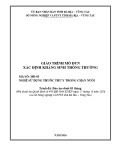
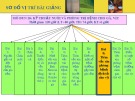
![Báo cáo kết quả thử nghiệm vắc xin phòng bệnh cúm gia cầm [Mới nhất]](https://cdn.tailieu.vn/images/document/thumbnail/2016/20160401/codon_10/135x160/6501459486152.jpg)
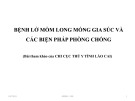
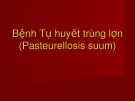
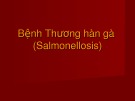
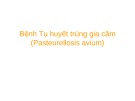
![Bài giảng Bệnh Phó thương hàn lợn [mới nhất]](https://cdn.tailieu.vn/images/document/thumbnail/2015/20151023/cocacola_05/135x160/4161445588151.jpg)



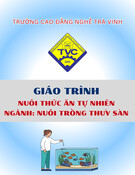
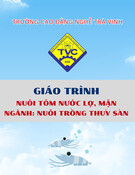
![Giáo trình Sản xuất giống tôm nước lợ, mặn (Trung cấp/Cao đẳng) - Trường Cao đẳng nghề Trà Vinh [Mới nhất]](https://cdn.tailieu.vn/images/document/thumbnail/2025/20251115/kimphuong1001/135x160/76031763179346.jpg)
